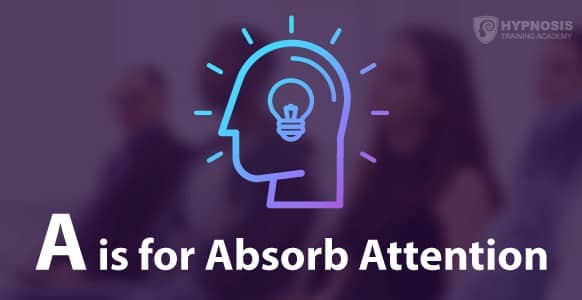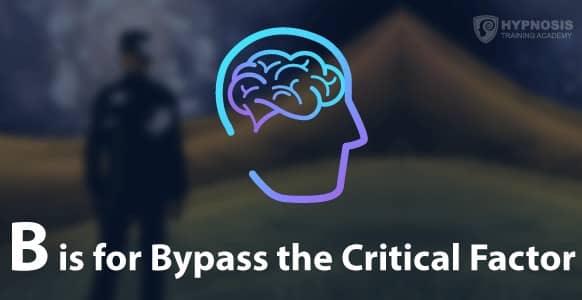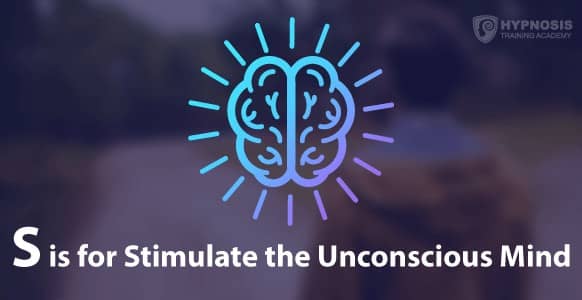
Interested to discover how you can create lasting NLP anchors with the power of hypnotic “hot words?” Get instant access to our FREE video and report training to find out how you can set NLP anchors, build rapport and bypass a subject’s critical mind.
Interested to discover how to hypnotize someone for the first time?
Understandably, it can be intimidating to say the least.
Especially if your head is swimming with different techniques and bursting with information to the point where you literally don’t know where to start!
If this sounds like you, you’ll be happy to know that there’s a simple technique you can use to put someone into a hypnotic trance instantly and learn how to hypnotize someone for the first time.
But first, let’s briefly take a look at what hypnotic trance is, and then at the 3 main parts of a hypnosis session.
What Is A Hypnotic Trance?

It sounds mystical. Or even magical.
Like an enchanted spell. But hypnotic trance is actually much more straightforward than that.
It’s just a word used to identify the conditions under which someone responds to hypnotic suggestions.
And that’s what a trance is for. You put someone into a trance, pile on the suggestions, and help them make changes at the unconscious level.
You don’t actually need to be in a trance for hypnosis to occur. However, when someone is in a trance, it’s easier to make suggestions and that’s how you hypnotize someone for the first time.
Trance really is just a metaphor, a signal to tell you when someone is responding to your hypnotic suggestions.
You might notice their breathing slowing down, for example. Or their pupils dilating. Or perhaps they stop fidgeting about.
These signs let you know that the person is in a trance state, ready for you to deliver your suggestions.
Trance is part of your induction, the technique you use to hypnotize someone so that you can work with them.
The induction element is designed to help them relax their mind and body so they are more susceptible to your suggestions.
To put it into context for you, let’s take a look at the elements of a typical hypnosis session and how to induce a trance for you to learn how to hypnotize someone for the first time.
How To Hypnotize Someone For The First Time: Inducing Hypnotic Trance With The ABS Formula & Instant Inductions
A typical hypnosis session is usually comprised of the following 3 elements:
1. Induction – where you bring the subject into a trance
2. Change work – where you use hypnotic suggestions and other techniques to help them make a change
3. Exit – where you bring the subject out of trance
As this article focuses on how to hypnotize someone – meaning how to put someone into a hypnotic trance – we’ll mostly be looking at this first part – the induction.
The second part of the process – the change work – is where you use hypnosis techniques to reach a desired outcome, such as helping someone quit smoking.
However, we won’t be going into too much detail in this article about this part of the process as an article just isn’t enough to learn how to hypnotize someone!
But later you’ll find a few links to other articles that breakdown hypnotic techniques, but for now let’s take a look at the first part of the hypnosis process – how to put someone into a hypnotic trance.
There are many ways you can learn how to hypnotize someone for the first time, but one of the simplest ways (especially when starting out) is to use the ABS Formula.
1. Induction Process – Hypnotizing Your First Subject With The ABS Formula
In order to put someone into a hypnotic trance and learn how to hypnotize someone for the first time, you have to be able to do 3 things:
- Get their attention
- Bypass their conscious mind
- Tap into their unconscious mind
Do those 3 things, and your subject will enter a hypnotic trance. And then once you’ve got them in a hypnotic trance – you can begin the change work process, for example, by giving hypnotic suggestions.
When starting out, one of the easiest ways you can achieve this is by using the ABS Formula. So let’s break the ABS formula down into its constituent parts to see how it works and how you can hypnotize someone for the first time:

Absorb Someone’s Attention

Cool fact for you: hypnosis is a natural state that you can enter several times a day.
It can happen when you’re absorbed in a good book. Or when you’re totally engrossed in your favorite hobby.
You can get so lost in thought when you’re driving a car that you find yourself unable to remember certain parts of the journey.
Why? Because your mind wanders. Or, to be more precise, your focus changes.
Instead of focusing on the world around you – the outside world – you’re focused on your thoughts and feelings – the inside world.
And that’s all that hypnosis is. It’s a highly-focused state of concentration in which your focus switches from the outside world to the inside world, or from the conscious world to the unconscious world.
But before you can help someone focus on the inside or unconscious world, you have to do something else that’s vitally important.
You have to get their attention.
There are lots of simple ways to get someone’s attention. For example, you could:
- Ask them to look into your eyes
- Show them a picture
- Tell them a story or a joke
In a less formal setting where you want to practice some conversational hypnosis, you could just walk up to someone and say: “Excuse me, can I ask you a question?” or “Excuse me, can I get your help with something?”
As long as you’re polite and don’t come across as being pushy, most people will probably oblige. They’ll either be curious about the question you want to ask, or they’ll be keen to show you how helpful they can be.
But assuming you do have a hypnosis subject sitting in front of you as a captive audience who is ready to get down to business – you can just ask them to close their eyes.
Simply tell your subject to gently close their eyes. Tell them that by closing their eyes, they will start the process of allowing themselves to enjoy a nice level of trance.
This reiterates the fact that you are the expert. Note that you are not asking your subjects to close their eyes as much as you are telling them to do so.
It’s important that you tie together the fact that someone is closing their eyes to the fact that they are also allowing themselves to go into hypnosis as part of the process.
Once you’ve got the other person’s attention, then you can move on to the second part of the ABS formula.
Bypass Their Critical Factor

The critical factor refers to the conscious mind. It’s that little voice in your head that analyzes everything, makes judgements and rejects information.
You need that little voice too, because it helps you make decisions and evaluate situations. If you weren’t able to do that, day-to-day living would be hard to navigate. You would most likely make reckless decisions – such as not looking before you cross the street, or saying yes to someone who has repeatedly messed you around.
But thanks to your conscious mind, that doesn’t happen. It helps you weigh things up and choose a course to follow. Yet as helpful as that is, it also has a drawback.
The more your conscious mind tells you that you can’t do something, the less likely you are to do it. Or to even try to do it.
You can spend so much time weighing up the pros and cons that you end up stuck, not knowing which way to go.
And that’s where the unconscious mind can come to the rescue.
Unlike the conscious mind, it doesn’t over-analyze everything. It doesn’t criticize everything. It doesn’t evaluate or make judgements.
It simply accepts whatever you tell it and goes to work to make it happen. That said, the unconscious mind will not accept suggestions that go against your values or ethics.
And that’s why it’s such a valuable tool in hypnosis. In fact, communicating with the unconscious mind is the whole reason for doing hypnosis in the first place. But how do you actually do that?
Here are a few things you can try:
- Tell an engaging story
- Use plenty of power words and linguistic bridges
- Employ hypnotic themes such as focus, relaxation, learning etc.
- Pepper your speech with hot words
Power words are words like and, because, as, and imagine that can connect ideas together (linguistic bridges), build a picture in someone’s mind, and therefore help to stimulate their unconscious.
Hot words are words designed to stir up the emotions. So instead of saying “the infant perished in the fire” you’d say “the baby died in the blazing inferno.” The words baby, died, and inferno are hot words because they’re packed with emotional content.
Here’s an example of how you might combine power words (in bold) and hot words (in italics):
“Close your eyes and relax. And as you relax, imagine yourself drifting on a calm and beautiful river. Picture your muscles becoming loose and limp, feeling completely relaxed as you enjoy the most exquisite trance experience ever.”
Telling a story is one of the easiest ways to get started. A good story has the power to captivate people of all ages. And as soon as someone tunes in to your story, their conscious mind switches off and their unconscious mind takes over.
It could be a story about you, a story about someone else (like the My Friend John or Jane type of story), or a story you heard or read about.
And remember that it doesn’t have to be a novel. It could merely be a brief anecdote of something that happened, possibly something unusual, to grab their attention and bypass their critical factor.
Of course, once you reach that stage, you’ve already started working on the third part of the formula, which is the part where you stimulate the unconscious mind.
Stimulate Their Unconscious Mind

To be honest, if you’ve got the other person enthralled in a good story, then you’ve already begun stimulating their unconscious mind. And as a hypnotist, that is exactly what you’re trying to do.
You need to get at the unconscious mind without any interference so that the unconscious mind does the work. That’s crucial if you want to help people make changes in their lives.
Why do people struggle to make changes in their lives? Often it’s because they’ve tried everything they can think of and nothing has worked. Or they don’t believe in themselves.
If you look at the words in bold above, you’ll notice something. They’re both indicators of the conscious mind at work. And if you’ve tried to find answers to questions or solutions to problems but come up short, where can you turn?
To the unconscious mind, of course. That’s the seat of creativity, the source of inspiration, the land of dreams and infinite possibilities.
It’s thanks to the unconscious that you have those occasional “Eureka!” moments. Like when you’re struggling to come up with a solution and then, when you least expect it, the answer pops into your head.
Using hypnosis, it’s possible for you to tap into the unconscious mind and use its power to help people live more rewarding and fulfilling lives.
And that’s why you want to put them into a hypnotic trance. That’s a way on how to hypnotize someone for the first time.
It’s important to note that you will probably find yourself using different inductions for different people. If getting relaxed is a major issue for someone, for instance, you might have to spend a long time doing a relaxation themed induction.
For others, you might be able to do the induction in just a few seconds. That may depend on how susceptible the person is to hypnosis, or whether or not they’ve been hypnotized before.
2. Change Work Process – Using Hypnotic Suggestions
Once you’ve done your induction to put your subject into a hypnotic trance… you’re ready to give them hypnotic suggestions.

And in case you’re wondering… a hypnotic suggestion is a directive given to a subject to carry out before, during or after trance.
For example, during hypnosis, the suggestion may be to focus only on the hypnotist’s voice and allow it to take them deeper and deeper into trance.
An example of a suggestion after trance, may be the directive that when a subject has the urge to smoke again, they recall the disgusting taste it leaves in their mouth. This then makes them not want to have another cigarette.
For example, by asking your subject to visualize their ideal relaxation environment as part of this phase.
Always check with your subjects ahead of time to determine what their ideal relaxation environment is. Describing some kind of scene from nature works well.
As part of the pre-work of this phase, you’ll also want to work with your subject beforehand to determine the goal for the session (i.e. what problem they came to work through). Working with your subject to create hypnotic suggestions is a wonderful way to set yourself up for success.
This step of the process is where you will use your vivid imagination. Stimulating your subject’s imagination is as easy as describing the environment you’ve chosen together.
You’ll want to be vague about the environment, supplying only general detail that would be there and letting your subject fill in the landscape for themselves.
You’ll then repeat your hypnotic suggestions over and over because repetition is necessary to associate the change.
You might say something like this:
“Now close your eyes and go into hypnosis. You will feel my touch on your shoulder and that is your cue to go deeper and deeper into trance. Allow yourself to relax more and more with each breath.
And as you go deeper and deeper now, into a nice comfortable trance, you’ll become more and more relaxed.
It’s easy to be so relaxed and it feels good to go deeper and deeper.
Now I would like you to imagine an enjoyable day at the beach.
There may be a breeze against your skin and perhaps you can notice the colors of the water.
As you relax even more deeply, you might even find a nice comfortable stop to sit at and enjoy the view.
Smell the air as you relax even more deeply.
It feels so good to relax and let it all go. As you relax at your beautiful serene spot, you realize how positive and hopeful you feel.”
The above is just an example – but as the hypnotist, you’ll want to cater your dialogue and suggestions around your subject’s needs – as every subject you work with is different.
>>And to discover more about hypnotic suggestions and some other cool hypnosis techniques (including demos), check out the articles below:
- 11 Secrets To Creating A Powerful Post Hypnotic Suggestion (PLUS Milton Erickson Cures Driving Phobia) – 2ND EDITION
- [ADVANCED GUIDE] How To Master Hypnotic Regression Therapy – Part I: Essential Principles To Profoundly Transform Your Subject’s Emotional Trauma
- [ADVANCED GUIDE] How To Master Hypnotic Regression Therapy – Part II: Proven 12 Step Method To Successfully Dissolve Anxiety, Phobias and Traumas, Plus Bonus Video Training
- [NLP DEMO] How To Use The NLP “Swish Pattern” To Redefine A Negative Self-Image & Increase Confidence
3. Ending A Hypnosis Session – Bringing Your Subject Out Of Trance
The final part of the process is bringing your subject out of trance, back to their normal waking state.
To do this, tell your subject to simply bring themselves back out of trance as you count from one to 3.
Tell them at the count of 3 that they’ll open their eyes feeling refreshed, relaxed and simply fantastic.
Before you bring them out of trance, make sure to cancel out any hypnotic suggestions you don’t want to stay active in their life.
Tell them it’s okay to open their eyes or move their arm, for example, upon awakening.
If your subject is having trouble waking up, simply tell them it’s okay to awaken, and that every part of their body feels normal once again.
And then once they do, ask them to do a big stretch to get their limbs moving!
How To Hypnotize Someone For the First Time: The 60-Second Hypnotist & Erickson’s 4 Trance Inductions
So now you know the 3 main parts of a hypnosis session (induction, change work and exit) as well as a cool technique to induce trance – the ABS Formula.
But if you’re like most eager hypnosis students – you probably want more induction techniques… such as an instant induction!
Instant inductions get their name from the fact that they can be performed very quickly (almost instantly) – allowing you to get down to business faster.
You should make a habit of performing these types of inductions as often as possible, on as many people as you can. Because the more you do them, the better you’ll get at doing them.
The faster and easier they will become. You’ll be able to do them automatically, without having to think about them. That’s how to do hypnosis.
Your approach will be smooth and polished, so that people will respond more readily to everything you do. When they do, you’ll end up having more success. And the more success you have, the more confidence you’ll develop as a result.

So here’s a very brief rundown of the 60-Second Induction to whet your appetite.
How To Hypnotize Someone For The First Time: The 60 Second Hypnotist
First up… curious to discover how you can hypnotize someone easy in 60 seconds or less? Below is a brief description of the “60 Second Hypnotist.” And although there are 10 elements, you’ll get through them very quickly.
1. Start with H+ – this is your intention to do your best for the person you’re going to hypnotize. Get switched on so you’re as positive and energetic as possible. Then ask for permission to touch them on the shoulder during the induction.
2. Induce the Trance – simply say: “Close your eyes and go into hypnosis.” This is an instruction, but it’s also a linguistic bridge, linking closing the eyes and going into hypnosis together.
3. Deepen the Trance – say “Every time I touch you on the shoulder, you’ll go deeper into trance.”
4. Sounds Around You – say: “Any sounds you hear around you will help you go deeper into hypnosis.”
5. My Voice – say “My voice follows you wherever you go, which allows you to hear my voice, and the meaning behind my words.”
6. Sanctuary – say “Feel the chair beneath you and know that you are safe.”
7. Change Work – this is the point where you add your suggestions to help your subject make whatever change they want to make.
8. Re-induction – say “Now, you are in hypnosis, which means that the next time you choose to go into hypnosis, you will find it easier than ever before.”
9. Self-esteem – give them a self-esteem boosting gift. Say: “You are an incredible person that people love to be around, you make everyone’s life better simply by being you. You are a fantastic hypnosis subject, and you can look forward to all the positive changes you have already made in your life.”
10. Re-emerge – bring them out of hypnosis by counting up, saying something like this: “In a moment I am going to count from 1 to 5, and when I reach 5, you will open your eyes, feeling refreshed, relaxed, and absolutely fantastic.”
Ironically, it takes longer than 60 seconds to read through the 10 steps. In practice, however, you can go through the sequence in 60 seconds or less once you get the hang of things.
Important note: Always ask the subject for permission to touch them before getting started. Most people won’t mind a simple touch as long as they know beforehand what to expect. Don’t ever surprise your subject by touching them without permission.
Milton Erickson’s 4 Trance Inductions
And if you’d like to discover even more trance inductions (and some of Milton Erickson’s favorites) check out the below hypnosis demonstration where master hypnotist Igor Ledochowski runs through Erickson’s 4 key trance inductions.
Psss… try and listen out for mention of the 3 parts of the ABS formula too!
Ready to take your hypnosis skills further?
Discover how to use hypnotic hot words to create lasting NLP anchors, build instant rapport, and bypass the critical mind in our FREE video + report training.
Top FAQs: How to Hypnotize Someone for the First Time
1. Is it possible to hypnotize someone on the first try?
Yes. Most people can enter a hypnotic trance during their very first experience, especially if you use a clear, structured induction like the ABS Formula (Absorb attention, Bypass the critical factor, Stimulate the unconscious). Research shows that hypnosis is a natural state of focused attention, so beginners typically respond well once they understand what to expect.
2. What is the easiest induction for beginners?
The easiest induction for new hypnotists is the ABS Formula, because it gives you a predictable 3-step process:
-
absorb their attention,
-
bypass the conscious mind,
-
stimulate the unconscious.
For faster results, many hypnotists also use the “60-Second Hypnotist” instant induction, which links simple instructions with trance signals.
3. How do I know if someone is going into trance?
Common signs of trance include:
- Slower or more rhythmic breathing
- Reduced blinking
- Facial relaxation
- A still, settled posture
- Subtle swaying or micro-movements
These signs match decades of research on hypnotic responsiveness showing that trance is a shift in focus, not a loss of control.
4. Do I need special skills to hypnotize someone?
No special skills are required. Hypnosis is a learnable communication process. What matters most is:
- clear instructions
- calm pacing
- rapport
- confidence in the technique
Neuroscience research (Spiegel et al., Stanford) shows that expectation and focused attention are the real mechanisms behind hypnotic response.
5. How long does it take to hypnotize someone?
A standard induction takes 3–10 minutes, but instant inductions (like the 60-Second Hypnotist) can work almost immediately. The more your subject trusts you and understands the process, the faster trance typically occurs.
6. What should I avoid when hypnotizing someone for the first time?
Avoid:
- Rushing the induction
- Giving contradictory suggestions
- Using complicated language
- Touching the subject without permission
- Expecting deep trance immediately
Beginners respond best to calm, simple, step-by-step guidance.
7. Is hypnosis safe for beginners to practice?
Yes. Hypnosis is considered safe for most people because it is a natural mental state similar to daydreaming or deep focus.
The key safety rule is simple: Always give only positive, ethical suggestions and remove any temporary suggestions before waking the person up.














